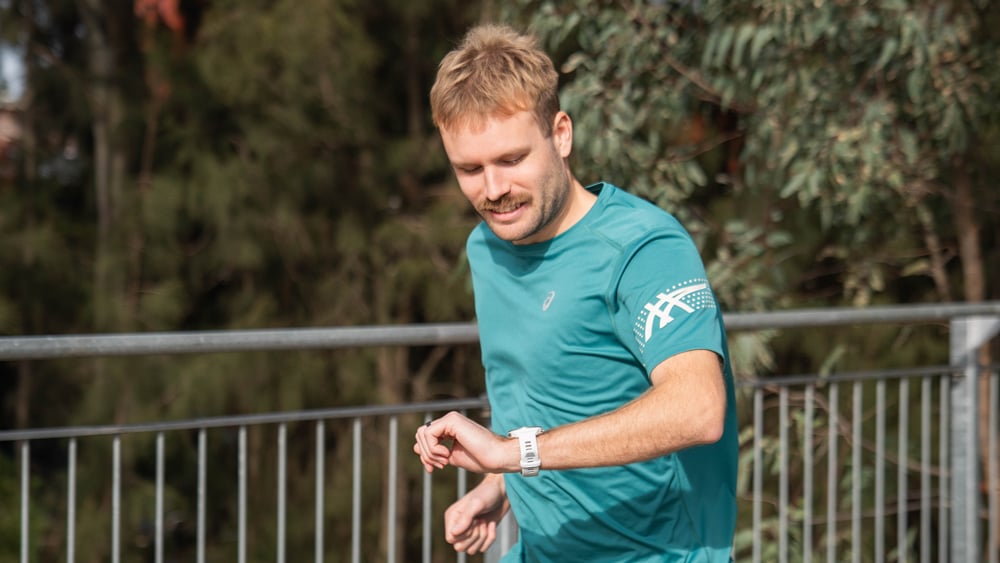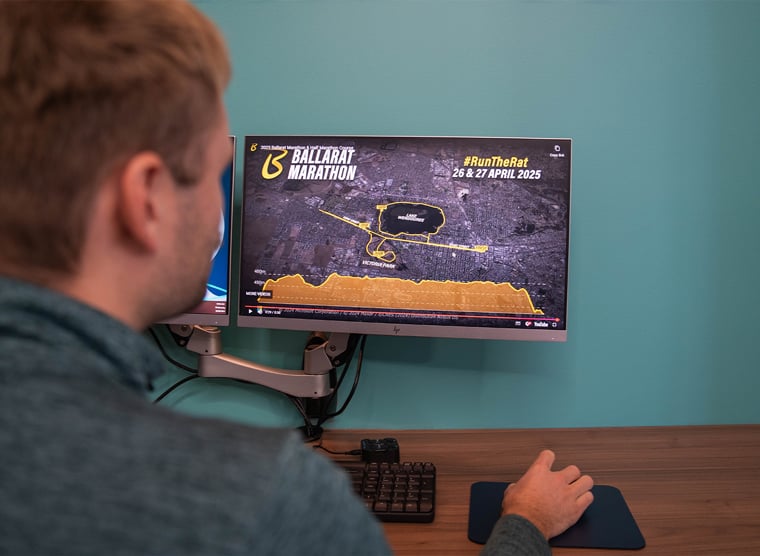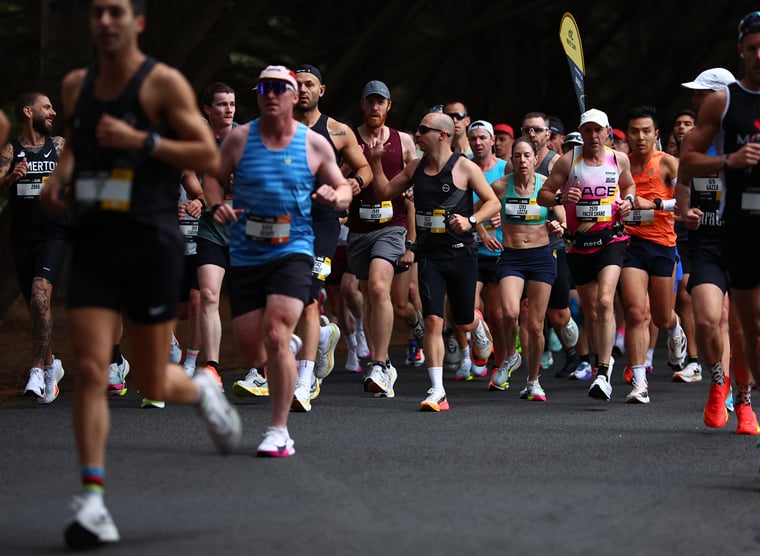How to Pace Your Next Road Race

Factors that impact your pacing
Pacing might just be the most underrated part of a successful race plan. Get it right and you finish strong, feeling in control. Get it wrong and you’re staring down the barrel of a long, painful final few kilometres. Most runners, especially in their early racing years have a story of going out too hard and paying for it on the back end. Pacing is a skill you can improve and by pacing your race smartly, you can avoid losing large chunks of time and finish knowing you gave it your best shot.
Here’s a few things to think about ahead of your next race...
Know your goal and fitness level
Before deciding how fast you’ll run, take a step back and look at what you're trying to achieve. Are you running to set a new PB, or is your main goal just to complete the distance? That goal should shape your pacing plan.
It’s also important to factor in where your fitness is right now, not just where you’d like it to be. Maybe you’re coming off a shorter training block due to injury or other life commitments. In that case, a more conservative approach might be the best way to ensure a strong finish. On the other hand, if you’ve just come off a solid training block, hit a recent PB, or feel like your fitness has jumped in recent weeks, you might consider being a little more ambitious with your pacing.
Being honest about your current form is key. Pacing strategies work best when they’re realistic about where you're at.
Understanding the different pacing strategies
Let’s break down some of the most common pacing strategies:
- Even Splits: Running each kilometre at roughly the same pace. This is often the most efficient strategy, but requires strong discipline.
- Negative Splits: This means starting a little slower than goal pace and gradually increasing your effort across the second half of the race. It’s a smart strategy for those who want to avoid blowing up early and finish strong.
- Positive Splits: Running faster in the first half, then hanging on. While this can work in shorter races or tactical efforts, it’s a risky play and usually leads to a slower finish if your early pace is too aggressive.
- Progressive Pacing: Similar to negative splits, this strategy involves gradually increasing pace every few kilometres.
- Effort-Based or Heart Rate Pacing: Particularly useful in tough conditions or on undulating courses, this strategy involves running based on how your body feels rather than sticking rigidly to your watch. It teaches you to be responsive and adaptable.
Each of these strategies has its place depending on your fitness, experience and the race itself.
Use technology, but don’t rely on it
Your running watch can be a helpful tool during a race. Real-time feedback on pace and heart rate can help keep you in check, especially during the early kilometres when adrenaline is running high. It’s also useful to use pace calculators beforehand to estimate realistic target times based on your recent training or race performances.
But be cautious, GPS isn’t always 100% reliable. Urban races with tall buildings, tunnels, or underpasses can throw off your data. Don’t let your watch override your own feel for the pace. If it says you're running too slow but your breathing and effort feel spot on, trust your body.
Tech should support your plan, not control it. The best pacing decisions often come from listening to your effort, not just the numbers on your watch.

Tailor your strategy to the course
Every course presents its own set of challenges. Hills, sharp turns, changes in surface and even aid station locations can influence how you should pace.
Study the course map beforehand. If there’s a big climb halfway through, plan to ease off slightly in the early stages so you’re not burnt out before you even get there. If the final few kilometres are a gradual descent, it might be a good time to plan for a strong finish.
Most of these course-specific elements will impact your splits and need to be factored into your strategy. If you push too hard up a long hill early on or surge to make up time in a narrow section, you might pay for it later. Smart pacing means managing your effort during changes in the course, not ignoring it.

Run in a pack and break down the race distance
Running with a group can make maintaining pace easier. Tucking in behind others gives you a mental and physical break where you can switch off slightly, stay sheltered from the wind and let the pack carry you for a stretch.
Another great mental strategy is to break the race down into smaller chunks. For example, marathoners might split the race into eight 5K blocks. That way, you’re only ever focusing on the next 5K, rather than thinking about the full 42.2km. This helps reduce overwhelm and keeps your pacing focused and steady throughout.
Staying mentally present allows you to react to how you’re feeling and adapt your plan without panic.

Factor in weather conditions
Weather can quickly throw a pacing plan off track. Heat, wind, humidity, or rain all impact how your body performs on the day. Pushing for a PB in high heat or strong winds often results in fading badly over the back half of the race.
In warmer weather, it’s often wise to scale back your goal pace slightly to preserve energy and avoid overheating. On windy courses, running in a group can help you shield from the wind and reduce the physical toll of battling it solo.
Be ready to adjust based on the conditions as not every race will be ideal and pacing flexibility is key to running smart.
Practice your pacing in training
Training is your testing ground. Use your long runs and workouts to get a feel for different paces. This is where you learn what your goal pace really feels like over time.
That said, don’t underestimate the race-day environment. The adrenaline, crowd and atmosphere can give you a noticeable boost, but it’s still important to run within yourself early.
Final thoughts
Pacing isn’t something you master immediately, it’s a skill that develops with experience, trial and error and honest reflection. Even seasoned runners get it wrong from time to time. You might misjudge your fitness, get caught up in the energy of the start line, or simply have an off day where your body doesn’t respond the way you expected.
The more you practice pacing, the more natural it becomes. You start to recognise what different efforts feel like, when to hold back and when to lean in. It’s not just about numbers on a watch, it’s about building the awareness and confidence to run your own race.
So if one race doesn’t go perfectly, don’t see it as a failure. Take what you can from the experience, adjust your strategy and carry that knowledge into the next one!


